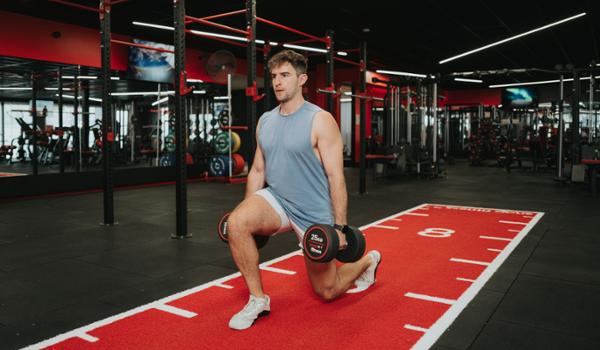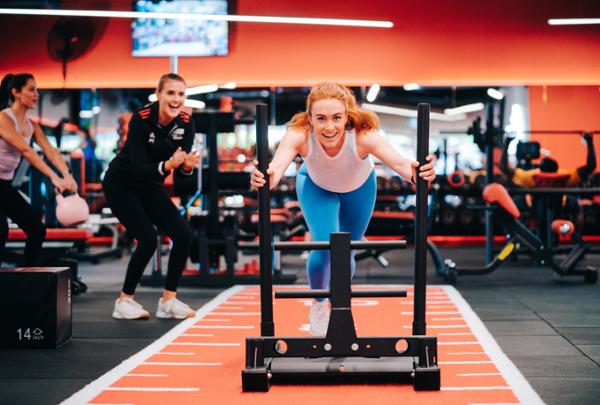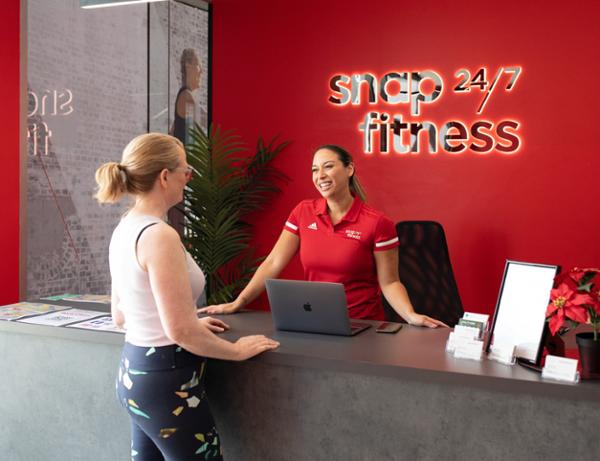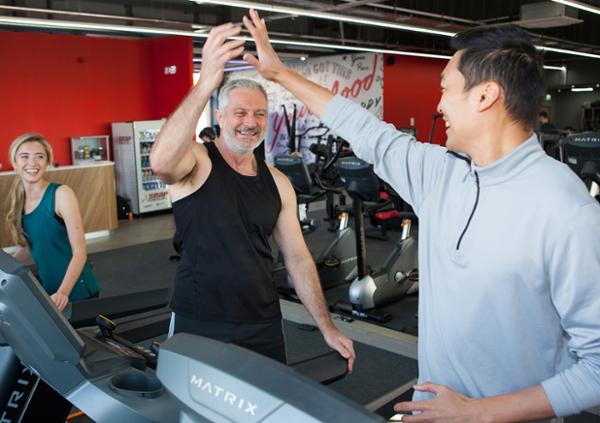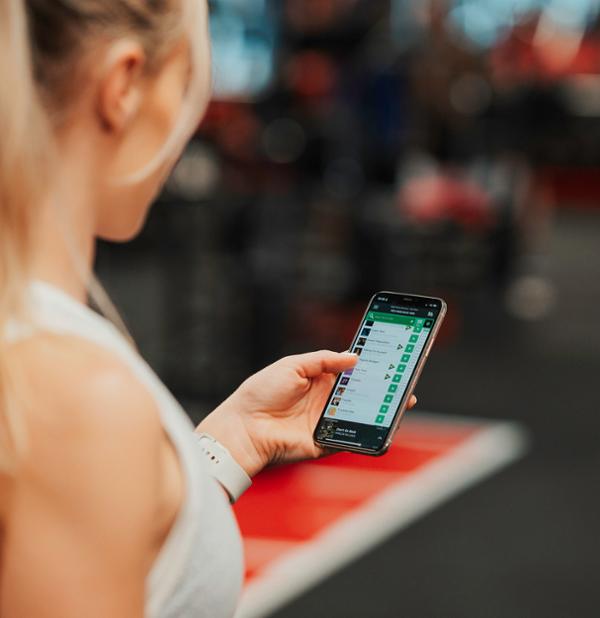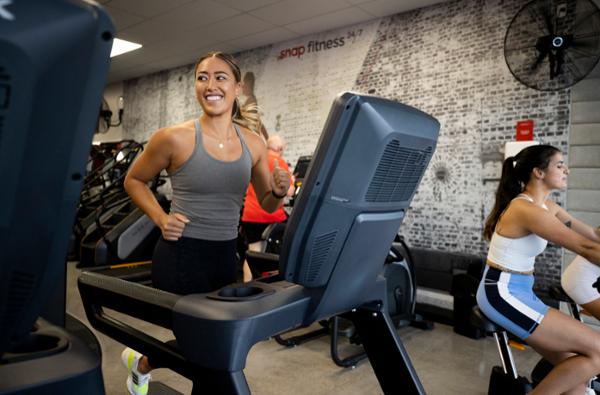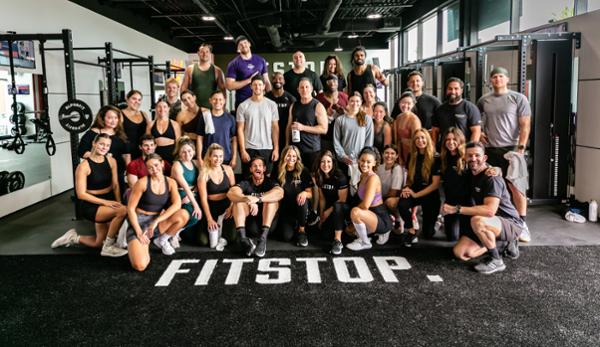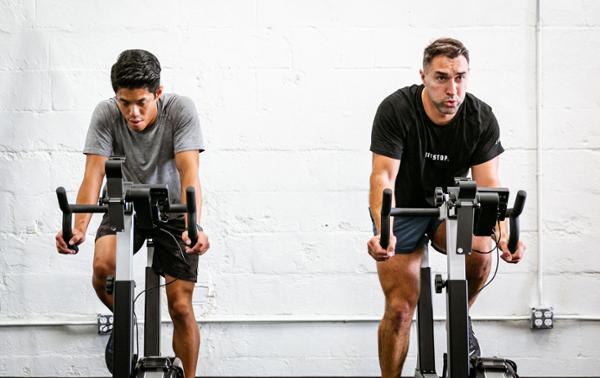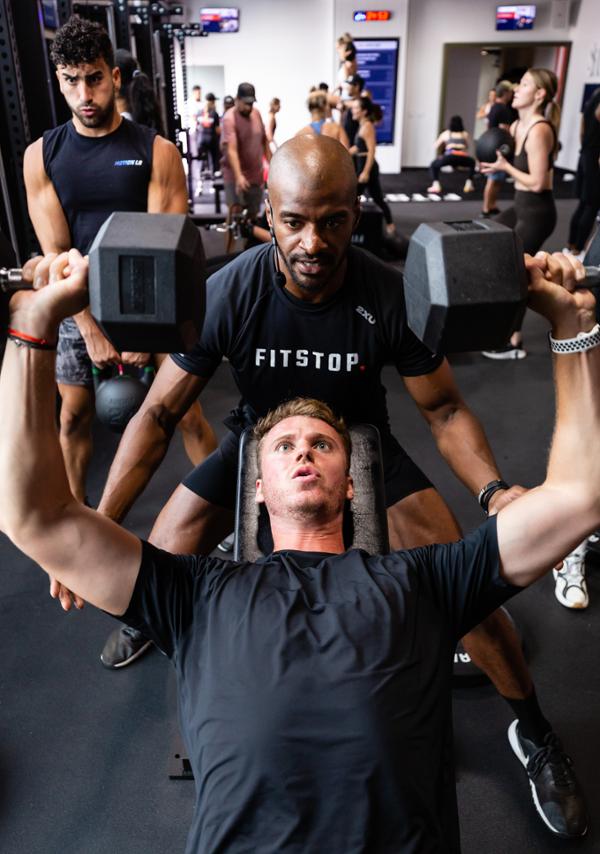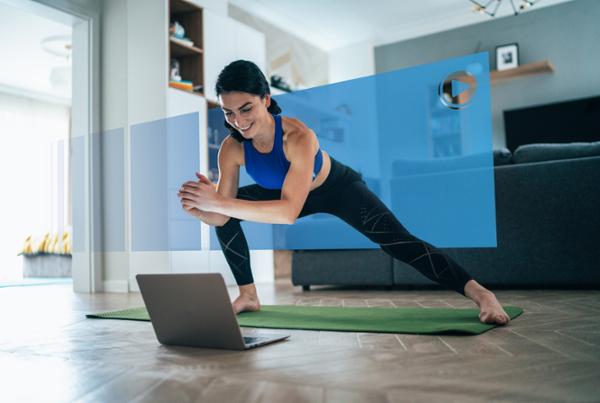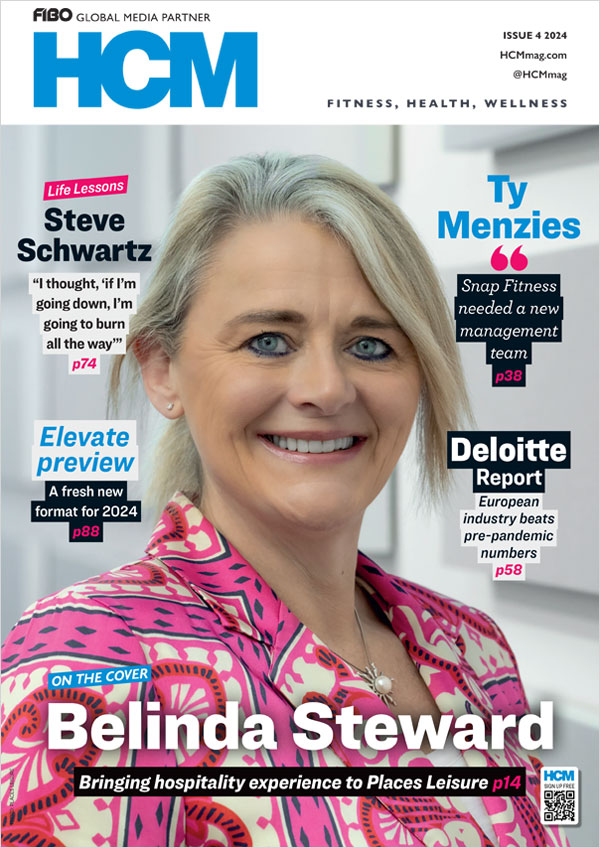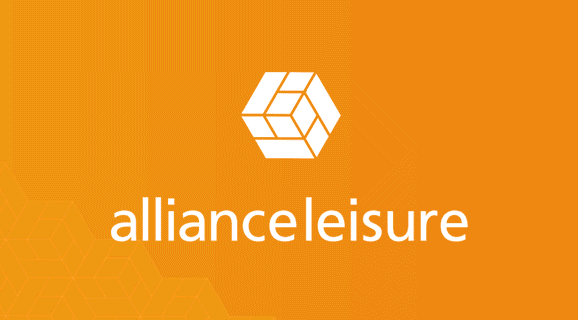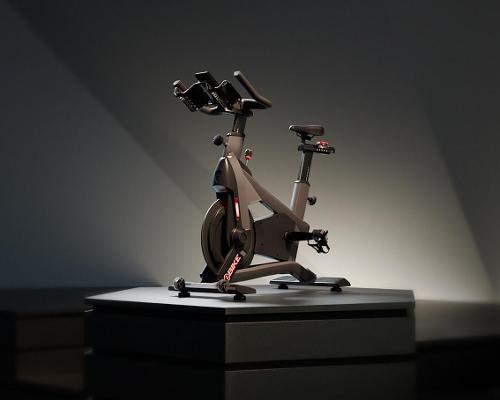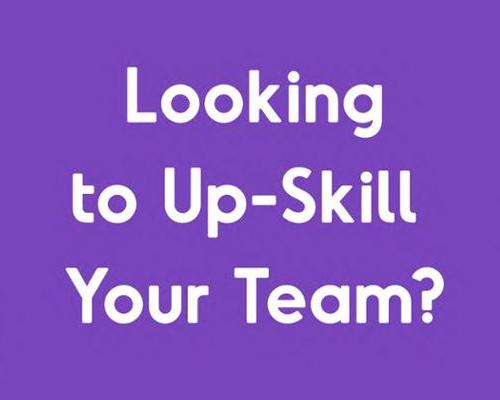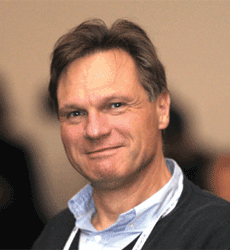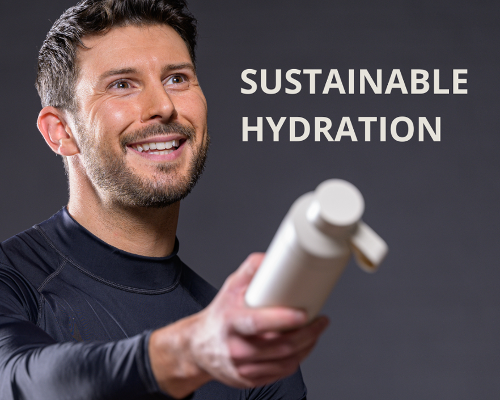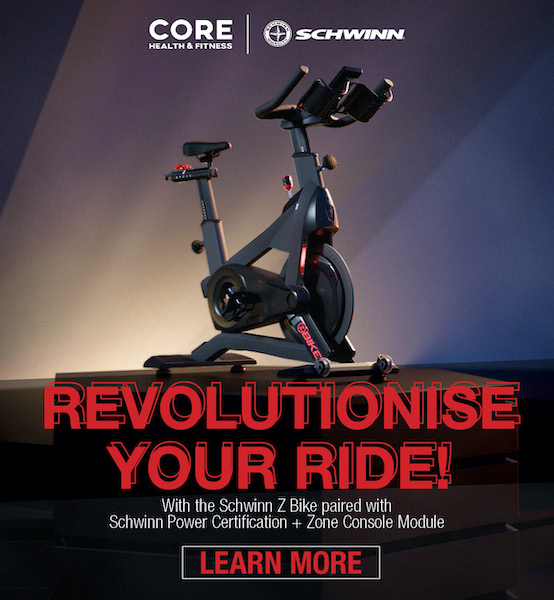features
Interview: Ty Menzies
Snap Fitness is looking for a new investor and with a goal of 35 per cent growth by 2028, has ambitious plans. The CEO of parent company Lift Brands speaks to Kate Cracknell
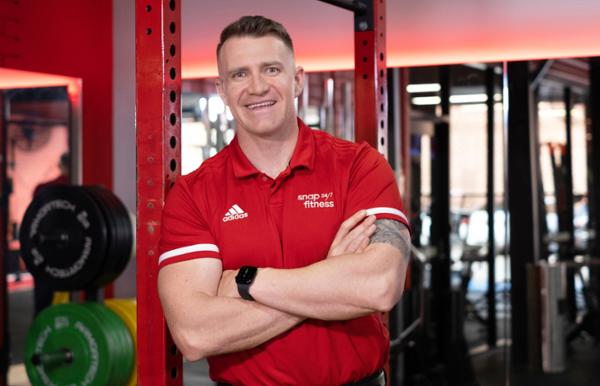
What was your journey into Lift Brands?
I started out as a personal trainer in Australia, moving through sales roles before relocating to the UK as a club manager for Gold’s Gym. It was my first introduction to franchising and club management and it fuelled an interest in gym ownership.
Returning to Australia, I purchased into the EFM Health Clubs franchise and ultimately owned three clubs, two in schools and one in a hospital. Taking the schools model as an example, we kitted them out and in the mornings, evenings and weekends ran them as private clubs. During the day, the schools used them for PE. In return, we had the space rent- and amenities-free. It was a great model.
Separate from EFM, I bought two independent clubs and converted them to a 24/7 model.
In late 2014 I sold most of my businesses – keeping just one club, which ultimately became a Snap Fitness when it was acquired by a franchisee in 2022 – as my wife and I were planning to get into management rights and hotels. But then I got a tap on the shoulder from the then master franchisor for Snap Fitness Australia and New Zealand. I ended up coming on board, and from 2015 to 2017 ran Snap Fitness Australia, then New Zealand too, before selling the master franchise rights for both countries back to Lift Brands and its finance partner TZP Group in 2018.
At that point, Lift Brands asked me to oversee all the Snap Fitness master franchisors across APAC, as well as running Australia and New Zealand, and gave me a good degree of autonomy as we were getting good results.
Then came a period of change in the company. Snap Fitness and Lift Brands founder Peter Taunton stepped back from management, although he remains on the board and in 2019 a new CEO was appointed. By early 2020, just before COVID, he had decided it wasn’t for him and I was offered the role. But by the time I’d flown back from New York to Australia, all our gyms had gone into lockdown. It was a hugely challenging time, running a global business where every market had different rules, and all from a country that had totally closed its borders meaning I couldn’t leave.
What were your first big projects as CEO?
I’d say that there were two critical things for me to work on – firstly, I needed to clean up the portfolio. Peter [Taunton] is a serial entrepreneur; when I took over as CEO, Lift Brands had grown to nine brands, from YogaFit to TruMav Fitness to Superior Security. We exited most of the brands, either because they weren’t profitable or because they didn’t align with the direction of the business. Our focus is now on owning and driving Snap Fitness and Fitness on Demand globally.
Secondly, I needed a new management team – one with the talent and strong leadership needed to take a 20-year-old brand like Snap Fitness and reposition it.
When it was founded in 2003, the model of affordable pricing, convenient 24/7 access and a smaller footprint…it was all ground-breaking. By the early 2020s, it wasn’t so innovative; the industry had evolved quite significantly, but the brand hadn’t.
It will take a while for every club to look like our newest units, but the repositioning work is complete and Snap is performing well: member numbers and same-store sales are up 15.5 per cent compared to pre-COVID and system-wide sales are similarly up around 15 per cent.
How have you repositioned Snap Fitness?
The first job was to understand where we sit in the market and how we should articulate our brand to potential members and franchisees.
We started by asking our existing franchisees for their views, and interestingly there was only one point where everyone agreed: we operate in a local community. Outside of that, there were very different responses. We realised we needed to align globally, to bring everyone onto the same page.
We embarked on a highly collaborative process with our franchisees, our team, our members and our ex-members. Led by brand strategy expert Yonder Consulting, there were extensive interviews, surveys, competitor research, community and ethnographic studies.
What became evident was that the fitness industry is homogenous in how it communicates what it does. The language is performance- and aesthetics-driven: many before and after photos, ‘harder, faster, stronger – no pain, no gain’ messaging, a lot of high-performance language that beginners can find intimidating.
Actually, most people go to a gym to feel better, and that’s far quicker to achieve than losing 5kg. So, we decided to move away from talking about how fitness makes you look to how fitness makes you feel.
How do you make ‘feelgood’ a reality?
It starts at the top with our ethos of ‘one team’, knowing this will ultimately filter down to our members. At Lift Brands, we aim to create happy, healthy lifestyles for our franchisees and our team as well as our customers. We’re all in this together. Our business will only succeed if everyone is successful and happy.
As part of that, we have a highly collaborative approach with our franchisees; in a franchise business, it’s very hard to drive change unless your franchisees are onboard and collaborating. They have to buy in and invest. So over the last few years, we’ve invested heavily in education for our franchisees and club managers, delivering 112 education sessions in 2023 alone, including some big regional events.
At a club level, we’ve introduced changes such as adjusting reception desk and stool heights to meet members at eye level when they come in; we’ve introduced good mood messaging around the club; and we communicate the idea of exercise being ‘for the feeling’.
We’ve also changed the way we segment our members, moving away from traditional demographics to create four profiles based on attributes and experience in the gym.
Now, our sales and marketing, onboarding and customer journeys are all geared around these four profiles, with a much more personalised approach than before. The team takes the time to understand who’s sitting in front of them and speaks to them accordingly, identifying barriers, helping find solutions, modifying the language they use. It all helps people feel happy about going on a journey with us.
The first of our four groups are the Fitness Newbies – people who’ve never been to the gym before and who need extra support. Then there are the Routine Seekers, who have a bit of knowledge but who have failed at the gym before and fallen off the wagon. Between them, these two groups make up 70 per cent of the Snap Fitness membership and we speak to them differently from the other two groups: the Motivate Me Mores, who know what they’re doing but need better support, community and content to stay engaged; and the Next Levellers, who are fully motivated and just want great kit, facilities, community and content when they need it.
Understanding people’s needs and using the right language to speak to them is key to helping each member feel good – comfortable and happy – in our clubs.
Does technology play a role?
In our proprietary app, members can earn milestone rewards and activity badges that recognise not only their activity in the gym, but also the things they do outside of the gym. The sense of accomplishment that comes from this fuels people’s motivation to keep going; small gratifications and reasons to celebrate make people feel good.
We already collaborate and integrate with a variety of digital products and wearable tech, including Apple, Google Health and Myzone. A Samsung integration is coming soon, and we’re looking forward to embracing further integrations this year to help our members easily prioritise their holistic wellness.
Through our Apple collaboration, we use financial incentives to motivate members. As you exercise, you earn credits to redeem against the membership cost by closing your Apple rings and visiting the gym. You can earn £7.45 a month in credits and redeem it whenever you like. Earning a month’s free membership is a great way to feel good about the activity you’ve done.
We’ll also be embracing AI in our app, with even more tailored workout and nutrition recommendations based on members’ goals and preferences, further supporting our personalised approach.
Has the offering changed over time?
Recent changes have been driven by consumer sentiment and demand. For example, a lot of people are telling us they want to feel stronger, which is great. We’ve therefore reduced our cardio areas by 20–30 per cent and given that space over to strength, functional training and open floor space; our digital content helps people build confidence faster, meaning these spaces are well used.
We’re currently looking at trends such as wellness, with recovery and wellness spaces possible future additions to our offering – provided we can do it within our model of affordable convenience. And as I mentioned previously, we also continue to invest in wearable technology and integrations.
Tell us more about your collaboration with franchisees
I love building culture across organisations, educating franchisees and helping them grow. It’s something I was involved in at EFM and a big part of why the Lift Brands role appealed in the first place. I’ve been a franchisee myself. I know how it feels when the franchisor makes decisions that don’t really consider the interests of the franchisee.
That’s why Snap Fitness has a franchisee advisory council for each of our regions, where we consult with representatives before making any decisions: we’ll only do something if it’s voted through by the majority. That leads to a lot of accountability in the business: we’re accountable to our franchisees, but once something has been voted through, we also expect all franchisees to get on board.
Every new franchisee gets between three and five days of intensive onboarding through the Snap University, as well as access to our ongoing learning and development platform. We leverage this digital content to suggest structured learning plans. We also deliver regional in-person training twice a year, and major regional conventions annually.
In return, we currently charge a fairly low fixed royalty with additional charges for various items: a new member fee, a maintenance fee and so on. We’re moving to a percentage royalty model though: 6 per cent, plus another 2 per cent for marketing. This will be a five- to 10-year process, as at existing sites we’ll only introduce the new model when tenures come up for renewal.
What are your growth plans for Snap Fitness?
From the 1,000 units we have now, we’re looking to reach 1,350 globally by 2028, predominantly in the US, Australia and UK, with some growth from Ireland and elsewhere in Europe and APAC.
We’ll focus on the 19 markets in which we currently operate and expect much of the growth to be organic: existing franchisees looking to take on additional units. We sold 77 licences last year, the most since 2012, and 70 per cent of these went to existing franchisees.
However, there’s also a great opportunity for new capital to drive further growth. TZP has been invested for 10 years – the result of a pandemic followed by our change in leadership – but Snap Fitness is now on the market through Stifel in the US and EMEA, supported by Record Point in APAC. We’ll need to see what the new ownership looks like, but we certainly have a very clear plan, a strong management team and a few possible areas of acquisition. The sale is about finding an investor that wants to buy into this.
What acquisitions are you considering?
We’re always on the lookout. Pilates is a trend we’re interested in, for example, and there’s also space within the Lift Brands portfolio for a different type of gym – a big box concept, perhaps. Ideally we’re looking for complementary acquisitions, but we might also acquire similar businesses that could be converted to Snap Fitness.
Lift Brands gives us a good platform to do this sort of thing, rather than trying to innovate purely within the individual brands.
Lift Brands also owns Fitness On Demand…
Fitness On Demand (FOD) was originally founded in 2011 to deliver on-demand, in-club group exercise on big screens in Snap Fitness clubs. Over time, the product has evolved to include a white label app for gyms, apartment complexes and corporate wellness, with our latest content partnership meaning we can offer Les Mills programming on our platform.
Of our 2,500 unique customers, 40 per cent are currently gyms, 40 per cent multi-family housing, 10 per cent hotels and hospitality, and 10 per cent corporate wellness and healthcare – but the latter is growing fast and is a big focus for us moving forward.
While it’s true that Lift Brands is a franchise specialist, we like having FOD in our suite of brands. It allows us to service the rapidly growing corporate wellness segment and address a broader customer base.
Tell us about some of Lift’s other investments
We have 40 per cent stakes in both 9Round and Fitstop, which are both single-discipline concepts.
The boutique fitness space is much tougher post-COVID and franchising single-discipline brands brings its own challenges. The initial investment for the franchisee is smaller, but studios tend to be run by the owner, meaning that franchisees typically only have one boutique site each.
As a result, you’re dealing with a much larger group of franchisees, increasing the risk compared to Snap, for example, where each franchisee typically has between two and four locations.
However, since 2013 Lift Brands has invested in the growth of 9Round. In addition to our stake in the global business, we also bought the master developer rights for Australia and New Zealand and have 22 locations. Mostly, though, we’re a good partner to a US-based business that’s still run by its own management team, with 420 units across 18 countries.
Meanwhile, Fitstop is a functional franchise with a focus on strength, conditioning and athletic performance. Based in Queensland, Australia, it’s growing well: in 2023, it added 45 locations and launched in New Zealand, Singapore and the US – growth in the US being one of the key reasons we came onboard. Fitstop now has 120 locations in Australia, four in New Zealand, three in Singapore and two – with a further four in build – in the US. It’s grown steadily and sustainably and has great founder-led energy.
That’s something we’d certainly look for in any future acquisitions: good founder-led principles and strong leadership, as well as a critical number of locations, strong franchisor financials and strong franchisee performance and sentiment.
Franchise specialist Lift Brands has 100 per cent ownership of two brands – gym franchise Snap Fitness and digital content and engagement platform Fitness On Demand – as well as minority investments in 9Round and Fitstop.
Snap Fitness has reached 1,000 clubs in 19 countries: approximately 550 in the US, 320 in APAC and 120 in EMEA, with strength in depth in the US, Australia and the UK.
Of the 1,000 clubs, around 25 are corporately owned – in the US, Australia and New Zealand – with plans to do more in the US and other key markets such as the UK and Ireland. “It gives us a feel for what’s happening in the market and allows us to test ideas and changes before we roll them out,” says global CEO Ty Menzies.
Interestingly, Lift Brands owns the master franchise for Snap Fitness in six markets: the US and Canada, Australia and New Zealand, and the UK and Ireland. Growth is in collaboration with master franchisees in the other markets: Benelux, Turkey, Georgia, Saudi Arabia, UAE, Japan, Taiwan, Hong Kong, Singapore, Philippines and Indonesia.
Minority investments of around 40 per cent in 9Round and Fitstop see these businesses still run by their respective management teams, with Lift Brands predominantly acting as a “supportive partner” that helps the businesses to grow.

